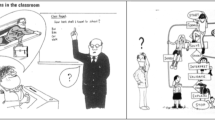Abstract
Successful applications of MS/OR depends on striking a balance between the science ofMS/OR (its tools and a body of related technical knowledge) and the craft of MS/OR, which isa much less well-defined collection of practical skills. Many observers note that the teaching ofMS/OR has emphasized the scientific aspects of the field to the near exclusion of the craft aspects.The major focus has been on the tools of MS/OR: linear programs, decision trees, queueingmodels, and so on. But for the practitioner, the tools or models themselves are only part of abroader modeling effort. Successfully teaching the craft of modeling has been a long-termchallenge in MS/OR. In this paper, I describe one successful approach, called the “studioapproach”, to teaching the craft of modeling to practitioners. This approach resembles the wayother arts such as painting or architecture are taught. I explore the analogy between teaching thecraft of modeling by first examining how the arts are taught, and then comparing how modelingis taught in a studio setting. One of many interesting connections between these two domains liesin the development of a specialized language by which the teacher communicates his or her craftto the student. I propose a number of modeling heuristics, or rules of thumb, which begin tocapture some of the language of the practising modeler.
Similar content being viewed by others
References
J. Dewey, John Dewey on Education: Selected Writings, ed. R.D. Archambault, University of Chicago Press, Chicago, 1974.
B.C. Eaves, Learning the practice of operations research, Interfaces 27(1997)104 – 115.
A.M. Geoffrion, The purpose of mathematical programming is insight, not numbers, Interfaces 7(1976)81 – 92.
H.F. Judson, The Search for Solutions, Holt, Rinehart and Winston, New York, 1980.
M. Magazine, The problem of teaching problem solving – the studio approach, INFOR 18(1980)220 – 228.
W.T. Morris, On the art of modeling, Management Science 13(1967)B-707– B-717.
S.M. Pollock, Mathematical modeling: Applying the principles of the art studio, Engineering Education (November 1976)167 – 171.
S.G. Powell, Teaching the art of modeling to MBA students, Interfaces 25(1995)88 – 94.
S.G. Powell, Six key modeling heuristics, Interfaces 25(1995)114 – 125.
S.G. Powell, From intelligent consumer to active modeler: Two MBA success stories, Interfaces 27(1997)88 – 98.
Report of a survey of OR/MS programs, INFORMS Education Committee, OR/MS Today, (February 1995)54 – 56.
D.A. Schön, The Reflective Practitioner, Jossey-Bass, San Francisco, 1983.
D.A. Schön, Educating the Reflective Practitioner, Jossey-Bass, San Francisco, 1987.
A. Starfield, K. Smith and A. Bleloch, How to Model It: Problem Solving for the Computer Age, McGraw-Hill, New York, 1990.
Master Plan: Suggestions for an MS/OR Master's Degree Curriculum 1993, ORSA/TIMS Committee for a Review of the OR/MS Master's Degree Curriculum, OR/MS Today 20(1993)16 –31.
T.R. Willemain, Insights on modeling from a dozen experts, Operations Research 42(1994)213 – 222.
T.R. Willemain, Model formulation: What experts think about and when, Operations Research 43(1995)916 – 932.
Rights and permissions
About this article
Cite this article
Powell, S.G. The studio approach toteaching the craft of modeling. Annals of Operations Research 82, 29–48 (1998). https://doi.org/10.1023/A:1018918921334
Issue Date:
DOI: https://doi.org/10.1023/A:1018918921334




